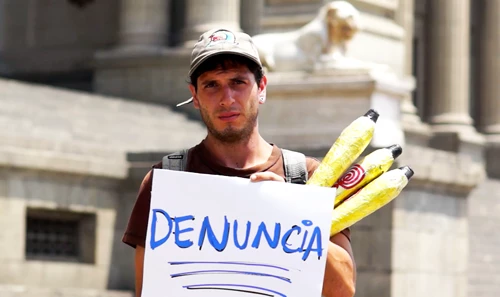Corruption has a considerable negative impact on development. Besides considerations associated with public ethics, corruption discourages private initiative and reduces available public resources, which in turn translates, for example, in less hospitals and poor education quality. Corruption also distorts the way governments use resources and undermines the public’s confidence in institutions.
Bribing, embezzlement, nepotism, and traffic of influence in decision-making processes are some of the typical manifestations of this form of bad government.
In Peru, the eighth fastest-growing economy in the world, corruption is a considerable problem. A few weeks ago, Proetica —Transparency International’s Peru chapter— presented the results of the 8th Corruption Perception Survey, which provides some sobering data: Peruvians perceive corruption as the country’s second most serious problem after crime.
Especially, it is the main problem facing the State and the one that hampers its development most. According to the survey, more than 50% of Peruvians believe that in 5 years corruption will worsen; and 82% believe that the efficiency of the government’s leadership in the fight against corruption is limited or null. That is the crude reality.
In addition, corruption is regressive, hitting the poor hardest. According to studies carried out by the World Bank, there is evidence that poorer Peruvians dedicate a higher percentage of their income to pay bribes in exchange for accessing basic services to which they are entitled by law (up to 14%, compared with 1% for richer citizens).
It also affects the private sector. Corruption is present in the relationship between the State and large companies, which may dedicate as much as 5% of their turnover to paying bribes in order to facilitate procedures and obtain contracts. In addition, the Global Competitiveness Report cites corruption as the second most serious obstacle to doing business in Peru.
Considerable progress achieved
In recent years Peru has achieved considerable progress in detaching itself from a legacy of systemic corruption that was pervasive in the past. However, some main governance indicators have not experienced substantial improvement since the 1990s: Peru’s political stability and rule of law indicators are relatively low compared with neighboring countries, and its political participation rate is rather moderate. Additionally, the exercise of the right to transparency and access to information face considerable challenges, in spite of the technical soundness of the relevant legal framework.
Therefore, there is considerable room for improvement in the fields of institutional efficiency, citizen commitment, and effective transparency.
In this regard, there are interesting initiatives that can accelerate improvement in the country’s governance performance. The government of Peru, through institutions such as the High-Level Anti-Corruption Commission (CAN), is carrying out initiatives to prevent and punish corruption, as well as facilitate reporting. The National Plan for Fighting Corruption (2012-2016) considers several initiatives at the three government levels to reduce vulnerability to corruption within the public sector and promote transparency.
Additionally, several coordination efforts with the private sector and the civil society (integrity pacts, social monitoring initiatives) aim at gathering efforts to achieve a greater impact of strategies —traditionally isolated— for fighting corruption.
Since 2010 the World Bank supports the steps taken by the government of Peru to consolidate and strengthen its systems for preventing corruption; and participates in the preparation of new transparency strategies.
The future Observatory of Corruption Risks is one of the main activities in this project. It will provide quarterly measures of public institutions’ vulnerability to corruption, taking into consideration dimensions such as the level of transparency and procurement procedures. The Observatory, whose findings will be made public, will issue policy recommendations to tackle, in each institution, the “gray areas” where corruption practices may be taking place.
The Bank is also financing studies on corruption perceptions, as well as pilot experiences for citizen oversight initiatives in peasant communities of difficult access.
The aim is to accompany the State in a continuous reflection process on how to prevent and reduce its corruption indices; and to contribute to strengthening civil society initiatives leading to greater vigilance and transparency requirements.
Do you think these measures are enough to reduce corruption in Peru? What more can be done?




Join the Conversation